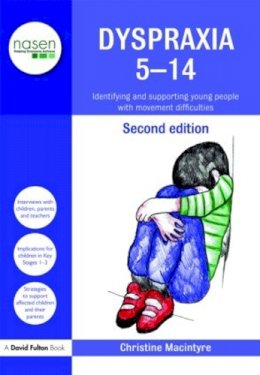
Dyspraxia 5-14: Identifying and Supporting Young People with Movement Difficulties
Christine Macintyre
Dyspraxia is increasingly common in young children. This fully revised and updated edition of Christine Macintyre’s invaluable companion explains the difficulties faced by children with dyspraxia in growing up and offers suggestions as to how these might be alleviated.
In this book the children themselves, along with their parents and teachers, talk about how the difficulties change as the transition is made from primary to secondary school.
Children with dyspraxia are frequently beset by frustrations as a result of their differences, can be misunderstood both at home and at school, and are very often bullied. This practical guide considers:
- the issue of giving children labels
- strategies to reduce stress
- the value of movement programmes
- raising self-esteem
- the transition to secondary school
- particular challenges faced during Puberty/adolescence
- handwriting as an indicator of dyspraxia.
Including practical activities with additional material for secondary pupils this book shows children how to articulate their differences using individualised explanations, and then go on to succeed having recognised where their talents lie.
Dyspraxia 5-14 is essential reading for teachers, parents, SENCos, teaching assistants and trainee teachers who want to improve their understanding of dyspraxia and its implications for children in Key stages 1-3.
Product Details
About Christine Macintyre
Reviews for Dyspraxia 5-14: Identifying and Supporting Young People with Movement Difficulties
10 years would eb the approximate shelf-life of this book. The author is one of the leaders in this field. Transition has become very topical in England and Wales with government initiatives so it is good that Christine has included this important aspect. The author also covers the very important issue of self esteem and combines this aspect with reduction of stress which nicely go hand in hand. I'm very familiar with the current edition. I use it as background reading for training purposes and have also recommended it to schools. The format, contents and style of the existing text are very good but I agree with Christine that the pictures need updating. It would be good to include something on pupil participation
how we find out from the children what they want 'done' for them not always what we 'do' to them. Christine has a remarkable quality at getting alongside practitioners and children and I wonder whether she could draw upon this to draw out the voice of children when illustrating her points. (Reading between the lines I think Christine probably already has plans to do this). A new edition will certainly enhance and bring the publication up-to-date and I recommend that you publish it.
